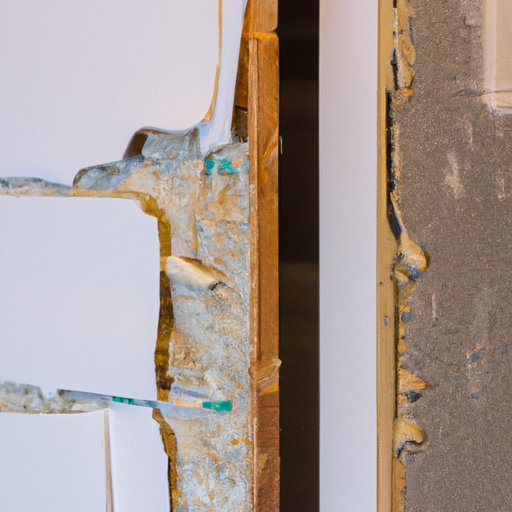
How to Install Drywall: A Comprehensive Guide
Installing drywall is a daunting task for many DIY enthusiasts. The process can seem overwhelming, but with proper planning and the right techniques, it can be accomplished by anyone. Whether you’re a homeowner looking to make some improvements or a contractor preparing for a project, this article provides a step-by-step guide to installing drywall, complete with tips for achieving a smooth finish and avoiding common mistakes.
Step-by-Step Guide
The most important aspect of installing drywall is proper planning and preparation. Before you begin, measure the walls and ceiling to determine how much drywall you need. Purchase extra material to account for mistakes and waste. Once you have your supplies, follow these steps:
Step 1: Cut and hang the drywall
Start by cutting the drywall panels to size using a utility knife and a T-square. Once your panels are cut, hang them on the wall or ceiling using screws and a drill. Be sure to space the screws every 8-12 inches along the edges and every 16 inches on the studs. Use a drywall lift to hold the panels in place while you work.
Step 2: Cut and fit the pieces
After hanging the drywall, you’ll need to cut and fit any remaining pieces. Use a drywall saw to make cuts for outlets and other fixtures. Then, use a rasp to smooth any rough edges. Fit the drywall pieces into any remaining holes and secure them with screws.
Step 3: Tape and mud the joints
Once all the panels are hung and fitted, it’s time to tape and mud the joints. This process involves applying joint compound to the joints, covering them with tape, and then applying more joint compound over the top. Be sure to use a joint knife to smooth out any bumps or creases in the tape. Allow the compound to dry completely before sanding.
Step 4: Sand and prime the wall
After the joint compound has dried, use fine-grit sandpaper to smooth the wall. Once it’s smooth, prime the wall with a drywall primer. This will ensure that your paint or wallpaper adheres properly.
Step 5: Complete the job
Once the wall is primed, it’s time to paint or wallpaper your finished wall. Before you finish the job, be sure to remove any leftover drywall material and clean up your workspace.
Video Tutorial
If you’re a visual learner, a video tutorial can be a great way to supplement your reading. This video provides a detailed demonstration of how to install drywall, with tips and tricks not covered in the article. You can access the tutorial by clicking the link here.
Pros and Cons
Drywall is a popular option for many homeowners and contractors. Here are some pros and cons to consider:
Advantages
- Drywall is affordable and accessible
- Drywall can be installed quickly and efficiently
- Drywall can be repaired easily with joint compound and paint
Disadvantages
- Drywall is susceptible to water damage
- Drywall may crack or break easily under stress
Other options, such as plaster and paneling, also have their advantages and disadvantages. Be sure to do your research before making a final decision.
Common Mistakes to Avoid
Installing drywall can be tricky, even for experienced DIYers. Here are some common mistakes to avoid:
- Over-screwing the drywall, which can lead to cracking and bulging
- Not measuring or cutting the drywall accurately
- Rushing the taping and mudding process, which can lead to a rough finish
- Using insufficient amounts of joint compound
By following the steps outlined in this article and avoiding these common mistakes, you can achieve professional-looking results on your next drywall project.
DIY vs. Hiring a Professional
While it may be tempting to install drywall yourself to save money, there are benefits to hiring a professional. Experienced contractors have the tools, experience, and expertise necessary to ensure that your walls look their best. At the same time, hiring a professional can be expensive. Be sure to weigh the cost, time, and difficulty levels of each option before making your decision.
Conclusion
Installing drywall may seem intimidating, but with proper planning and preparation, it can be a fun and rewarding DIY project. By following our step-by-step guide, you can achieve professional-looking results in no time.




